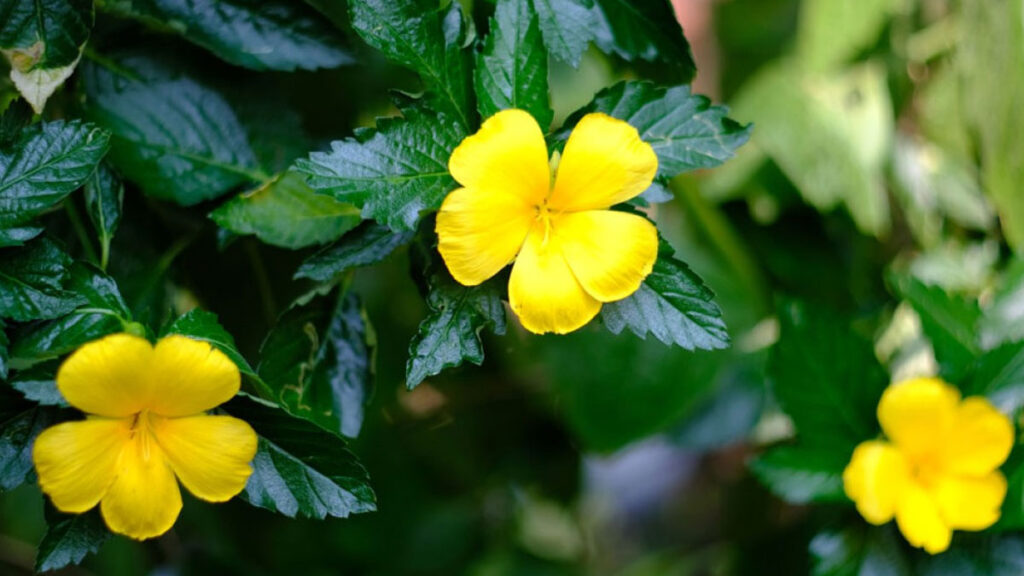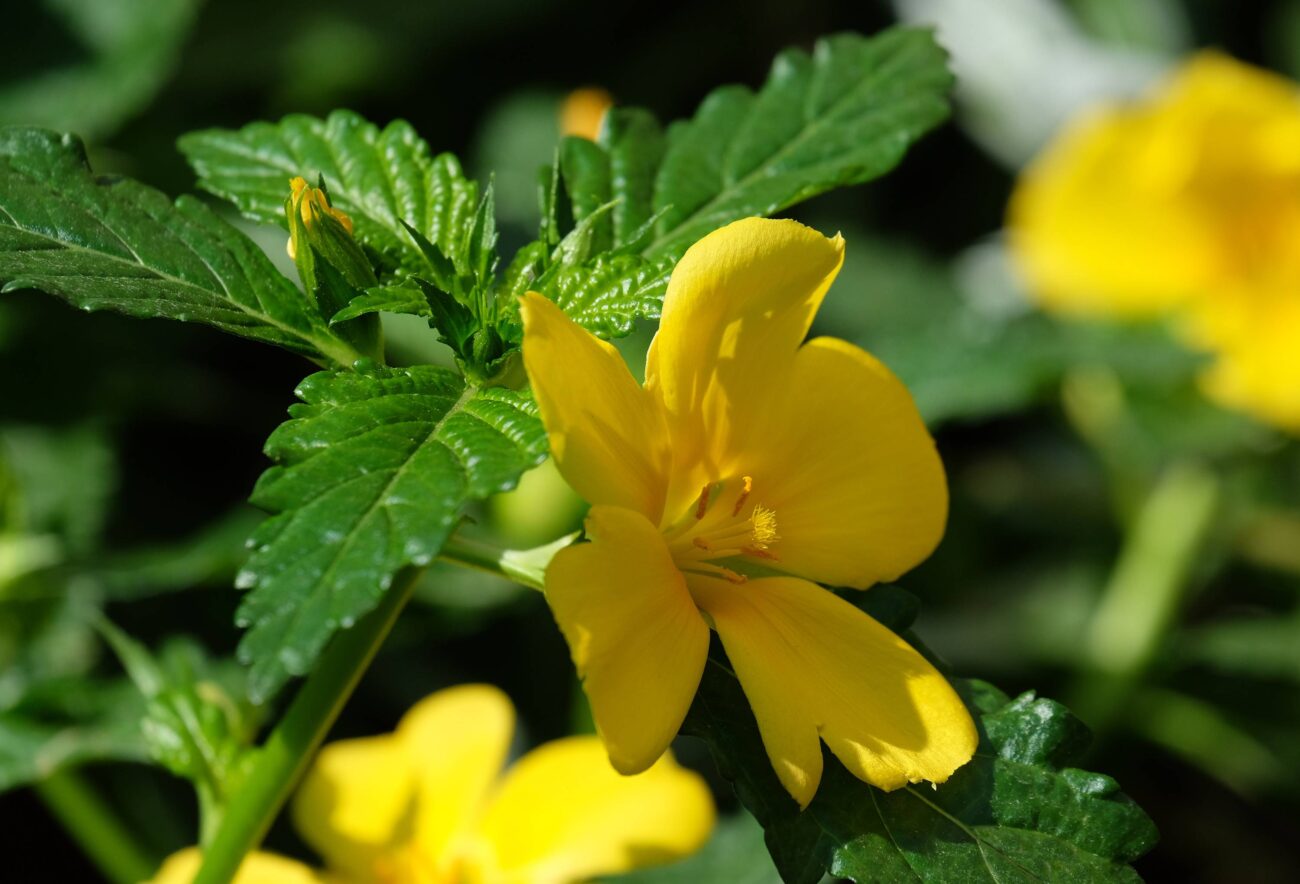Damiana (Turnera diffusa) is a small but powerful plant native to the Americas, especially found in Mexico, Central America, and parts of the Caribbean. For centuries, it has been treasured by indigenous cultures for its healing properties, and today it continues to gain popularity as a natural remedy for both physical and emotional wellness.
But what exactly does Damiana look like, and what can it do for your health? Let’s explore.
🔎 How to Recognize the Damiana Flower
Identifying Damiana in the wild or in herbal gardens is relatively easy once you know what to look for.
Here are its key features:
- Size: It’s a small, woody shrub that grows between 30 to 60 cm (1 to 2 feet) tall.
- Leaves: Light green, narrow, and aromatic with slightly serrated edges. They emit a pleasant, spicy scent when crushed — similar to chamomile or mint.
- Flowers: The most striking feature. Damiana flowers are small, bright yellow, and five-petaled, often appearing in the leaf axils.
- Bloom Time: Typically blooms in the late summer to early fall.
- Fruit: After flowering, it produces a small, sweet-tasting fruit that is often said to taste like figs.
It’s often grown in dry, sunny areas and thrives in sandy or rocky soils, making it a resilient addition to herbal gardens.
🌿 Medicinal Properties of Damiana
Damiana has a long-standing reputation as a natural aphrodisiac, but its benefits go far beyond that. Used as a tea, tincture, or extract, the plant supports a variety of bodily systems.
Here are the most well-known medicinal properties:
1. Natural Aphrodisiac
Damiana has been traditionally used to enhance libido and support sexual health in both men and women. It’s believed to improve blood flow to the pelvic area and reduce sexual anxiety, leading to a better overall experience.
2. Mood Support & Stress Relief
The herb has gentle anxiolytic (anti-anxiety) effects. Drinking Damiana tea or using its extract may help elevate mood, reduce nervous tension, and calm mild depression or stress-related symptoms.
3. Digestive Aid
Damiana can stimulate digestive juices and bile flow, easing indigestion, bloating, and constipation. It’s often included in herbal blends for gastrointestinal support.
4. Hormonal Balance
In traditional medicine, Damiana is sometimes used to ease PMS symptoms and support hormone regulation. Some women find it helpful for mood swings, cramps, and menstrual irregularities.
5. Cognitive Clarity & Focus
Mildly stimulating without causing jitteriness, Damiana may promote mental clarity and increase alertness and concentration, making it a favorite among herbalists for morning or midday use.
☕ Common Ways to Use Damiana
- Tea: Steep 1–2 teaspoons of dried leaves in hot water for 5–10 minutes.
- Tincture: Used for more concentrated effects; follow label instructions or consult an herbalist.
- Smoking Blend: Damiana is sometimes used in smoking blends for its calming effects (though this is less common and not recommended for people with respiratory conditions).
- Capsules/Powders: Available in health stores as supplements.
⚠️ Precautions and Contraindications
While generally safe in small to moderate doses, there are a few things to keep in mind:
- Avoid during pregnancy and breastfeeding, as its effects on hormonal balance and the uterus are not fully understood.
- May interact with diabetes or blood sugar medications — it has mild hypoglycemic effects.
- High doses may cause insomnia or hallucinations — more is not better!
- If you have liver or kidney issues, consult a healthcare provider before use.

🌺 Damiana is more than a lovely yellow flower — it’s a versatile medicinal herb with benefits for mood, digestion, hormonal health, and vitality. Whether you’re looking for a natural way to ease anxiety, boost libido, or support your digestive system, Damiana offers a gentle but effective solution from the heart of traditional herbal medicine.
Have you tried Damiana before?
Share your experiences or questions in the comments!

